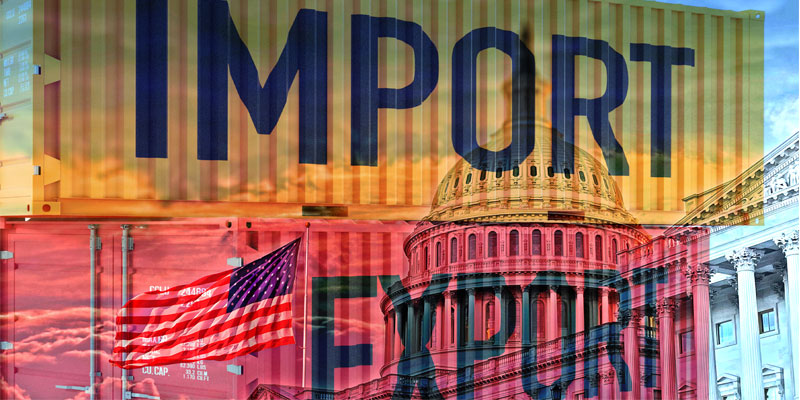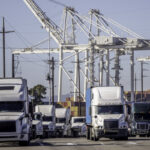
The transpacific eastbound trade lane has long been the most profitable route for global shipping lines. But that stability is now under threat, as fresh U.S. tariffs introduced by the Trump administration shake the foundations of container shipping.
At the heart of the disruption are steep new tariffs on goods imported from China—up to 145%—with only a few high-value electronics exempt, most of which are flown rather than shipped. Other Asian countries like Vietnam, Cambodia, and Thailand face a temporary 10% tariff until 9 July, when even higher “reciprocal” tariffs are set to kick in. This has triggered a scramble to move goods from non-Chinese countries before the deadline.
Still, the dominance of Chinese exports in the transpacific market means any decline from China will leave a big gap in global container volumes. In February alone, more than half of all eastbound transpacific shipments came from China.
These tariff changes come at the worst possible time—during April’s annual contract season, when the largest shippers and freight forwarders typically agree fixed rates and volumes with carriers for the year ahead. But with trade policy changing so quickly, long-term planning has become almost impossible.
Many manufacturers don’t know where they’ll be producing goods in six months. Carriers are equally unsure of how their shipping networks will look. This uncertainty is making annual contracts difficult to agree, with some companies backing away from them entirely.
Industry watchers have suggested backup contracts could be introduced—agreements that only come into effect if trade policy calms down—but for now, most businesses are focused on moving goods already in transit, cancelling new orders from China, and prioritising high-margin or exempt shipments.
As a result, the spot market—where space and rates are agreed week by week—is becoming more important. But it’s just as unpredictable. Spot prices will be influenced by shifting trade flows, capacity changes, and new policy threats on the horizon.
One of the biggest concerns is a proposed $1.5 million port fee for any vessel built in China. If introduced, this would reshape global fleet movements and reduce the number of port calls in the U.S., leading to congestion at fewer, busier ports.
And as seen during the pandemic, congestion drives up freight rates. Combined with lower demand, rising costs, and shipping delays, this could again squeeze supply chains and make operations inefficient. More blank sailings, cargo rollovers, and last-minute changes would become common.
Container shipping works best when everything moves in a predictable, steady rhythm. But in today’s volatile environment, that rhythm is breaking down. During COVID, strong demand allowed the industry to absorb high costs. In today’s weaker market, the same shock could prove far more damaging.
What happens next is unclear. But it’s likely that 2025 will mark a turning point. Either the industry adapts and we see the spot market take centre stage, or the current volatility forces deeper changes to the way container shipping is structured. What’s certain is that global freight is entering a new and unpredictable chapter.
At Global Forwarding, we recognise the challenges that global supply chains face. In the midst of shifting tariffs and volatile trade policy, our strong transpacific carrier agreements, paired with real-time spot market access, give our customers the resilience, flexibility and confidence they need.
From managing key trade routes to identifying alternative sourcing options, our tailored sea freight solutions are built for dependability. And with our 100% verified Clarity tracking system, you get full visibility at every stage of the journey—so there are no surprises.
EMAIL Adam Davies, the Global Forwarding VP today to see how we can help stabilise your ocean freight operations and keep your business moving forward.





